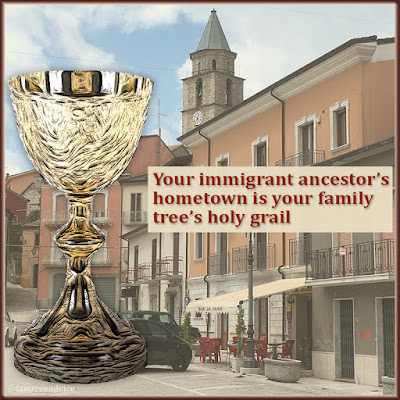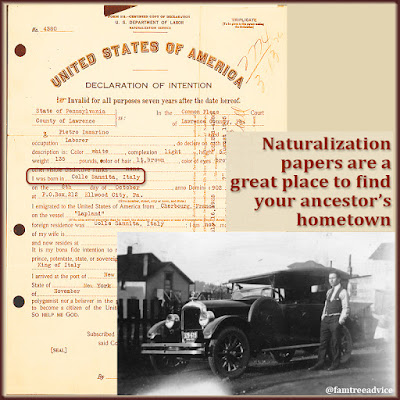I like to work from text-file task lists. I started doing this in my corporate job so I can easily re-prioritize my to-do list. If a task has a deadline, its line begins with the due date: AUG 11, AUG 25, etc. I keep those items in order so I never miss the deadlines.
This blog is about using business sensibilities and efficiencies in your genealogy research. So it makes perfect sense to use the task list idea in your family tree work.
There's no need for special software, although many of you may use Evernote or OneNote. You only need a text editor, like Notepad on a Windows computer or TextEdit on a Mac. I use Notepad++ because I can have a bunch of files open at once and include some HTML code when I need to.
Use your task list to keep track of:
- Where you left off with a search for an ancestor.
- Your theory about a particular ancestor and where you might find them.
- A problem you're trying to solve, like an unreadable last name or conflicting birth dates.
- Your progress on any of your annual genealogy goals.
- Links to online pages that may be helpful to you, and a note about why.
- Reference books you want to find or buy.
For each line item, it may help you to type last names in ALL CAPITAL LETTERS. Once you have several entries, you can organize them by type, or by branch of your family tree.
 |
| Keep a running, constantly updated list of what you're working on in your genealogy research. |
Here's an example. I found an unusual 1809 death record for my 5th great grandfather, Vincenzo Liguori. I found it in the 1840 marriage documents of his grandson, my 3rd great grandfather. The problem is:
- The document doesn't actually say he died in their hometown of Circello
- It doesn't mention his parents or wife…only his son, my 4th great grandfather
- It isn't included in the 1809 death records.
I need to find another version of the document in another set of marriage records. I'm missing the names of Vincenzo's grandchildren born before 1809. (Civil record keeping began in 1809 in my part of Southern Italy.) I need to search marriage records for anyone with the name Liguori.
I added this line to my task list:
- Did Gregorio LIGUORI [Vincenzo's son] & Apollonia Grazia Caruso have a child before 1809? Search Circello marriages starting in 1825 for other Liguori children. (I'm up to 1841.)
The end of that line item tells me where I left off. That's critical to your task list.
Here's another example. My 5th great grandmother Francesca d'Andrea is a dead end. I don't know when she died or who her parents were. I think she came from Pesco Sannita because I see the name d'Andrea on lots of documents from that town. I started looking for people who might be her siblings.
I added this line to my task list:
- Francesca d'ANDREA's parents may be Giuseppe and Rosa Salamone or Antonio and Vincenza Orlando. That's based on other d'Andrea death records. Search for supporting marriage documents. (Not started.)
Finally, I've been working on a branch of my family tree with the last name Consolazio from Santa Paolina. My closest Consolazio relative is my 2nd great grandmother. I've been renaming the town's vital records files to include the names on the documents. Then I'm trying to fit all the people named Consolazio into my family tree.
I added this to the task list:
- I'm up to 1828 births reviewing CONSOLAZIO records.
Keep your task list open each time you sit down to work on your family tree. Consult it often. When you finish a task, add a note to the right person in your family tree, explaining how you learned this fact.
The notes in your task list are great reminders of what you've already done to solve a problem. Re-reading these notes may trigger that "aha!" moment and help you finally solve that puzzle.




















